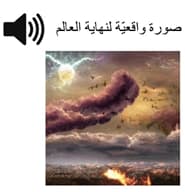In this blog, we demonstrate how multiple deep learning models can be combined to create a speech-to-image solution. We utilized the Stable Diffusion Model and Amazon Transcribe and Amazon Translate services to develop our solution. The process involves uploading an mp3 recording into S3, which triggers a lambda function to call Amazon Transcribe for speech-to-text conversion. Then, Amazon Translate is used to translate the transcribed text to English, and the HuggingFace model deployed on SageMaker is invoked to generate an image from the translated text. The resulting image is saved to a specific sub-bucket.
Text-to-image generation in artificial intelligence involves generating images based on a given prompt. This requires advanced natural language processing and image generation techniques. While still a work in progress, it is a major field in AI research. Our solution involves using Amazon Transcribe for speech-to-text conversion, Amazon Translate for text translation, and the Stable Diffusion model for image generation. The Stable Diffusion model is a latent text-to-image diffusion model developed by Stability AI and trained on a dataset of 5.85 billion CLIP-filtered image-text pairs.




Once an mp3 recording is uploaded into the S3 a lambda function will call Amazon Transcribe to transcribe the recording (speech-to-text), then it will call Amazon Translate to translate the transcribed text (text-to-text), and finally, it will invoke the HuggingFace model deployed on SageMaker to generate an image from the translated text (text-to-image) that is also uploaded to the specific sub-bucket.
Stable Diffusion is a generative neural network that can generate photo-realistic images from any text input. It empowers users to create stunning art within seconds.
The Lambda function is developed to call the deep learning models and complement their responses. There are three main models executed in this lambda: Transcribe Model, Translate Model, and Hugging Face Model.
import json
import boto3
from transcribe import transcribe_mp3
from translate import translate_text
from hf_model import generate_images
from upload2s3 import upload_file
client = boto3.client ( 's3' )
def lambda_handler(event, context):
#parse out the bucket & file name from the event handler
for record in event['Records']:
file_bucket = record['s3']['bucket']['name']
file_name = record['s3']['object']['key']
object_url = 'https://s3.amazonaws.com/{0}/{1}'.format(file_bucket, file_name)
transcribed_text = transcribe_mp3(file_name, object_url)
translated_text = translate_text(transcribed_text)
generated_images = generate_images(translated_text, 2)
for i, img in enumerate(generated_images):
img_name = f'{translated_text.replace(" ", "_").replace(".","")}-{i}.jpeg'
img_path = "/tmp/" + img_name
img.save(img_path)
upload_file(
file_name=img_path,
bucket='', # enter the s3 bucket name
object_name='result/' + img_name
)
return "lambda handled Successfully!"
Amazon Transcribe is used for automatic speech recognition. It uses deep learning models to convert audio to text.
The code includes boto3 library which allows us to access AWS services, it is as follows:
import json, boto3
from urllib.request import urlopen
import time
transcribe = boto3.client('transcribe')
def transcribe_mp3(file_name, object_url):
response = transcribe.start_transcription_job(
TranscriptionJobName=file_name.replace('/','')[:10],
LanguageCode='ar-AE',
MediaFormat='mp3',
Media={
'MediaFileUri': object_url
})
while True :
status = transcribe.get_transcription_job(TranscriptionJobName='audio-rawV')
if status['TranscriptionJob']['TranscriptionJobStatus'] in ['COMPLETED','FAILED']:
break
print('In Progress')
time.sleep(5)
load_url = urlopen(status['TranscriptionJob']['Transcript']['TranscriptFileUri'])
load_json = json.dumps(json.load(load_url))
text = str(json.loads(load_json)['results']['transcripts'][0]['transcript'])
return text
Amazon Translate is used to make the application more diverse for users around the world. It is a neural machine translation service that uses deep learning models to deliver fast and high-quality language translation. The implementation uses the Boto3 library to connect the code written on SageMaker to AWS Translate service. The translated text is saved as the prompt variable in English.
The code used is as following:
import boto3, json
translate = boto3.client ('translate')
def translate_text(text):
result = translate.translate_text(
Text = text,
SourceLanguageCode = "auto",
TargetLanguageCode = "en")
prompt = result["TranslatedText"]
return prompt
To deploy the HuggingFace Model, the steps provided by Phil Schmid in his blog entitled “Stable Diffusion on Amazon SageMaker” can be followed. Once the model is deployed, the SageMaker Endpoint name is noted, which is then invoked through the lambda code to generate an image from the translated text.
The code to invoke the SageMaker Endpoint is as follows:
import os, io, boto3, json, csv
from io import BytesIO
import base64
from PIL import Image
ENDPOINT_NAME = '' # enter your ENDPOINT_NAME
runtime= boto3.client('sagemaker-runtime')
# helper decoder
def decode_base64_image(image_string):
base64_image = base64.b64decode(image_string)
buffer = BytesIO(base64_image)
return Image.open(buffer)
def generate_images(prompt, num_images_per_prompt):
data = {
"inputs": prompt,
"num_images_per_prompt" : num_images_per_prompt
}
payload = json.dumps(data, indent=2).encode('utf-8')
response = runtime.invoke_endpoint(EndpointName=ENDPOINT_NAME,
ContentType='application/json',
Body=payload)
response_decoded = json.loads(response['Body'].read().decode())
decoded_images = [decode_base64_image(image) for image in response_decoded["generated_images"]]
return decoded_images



